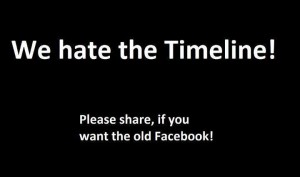One of the most common questions I’m asked when I meet potential new clients or even when I just happen to mention what I do is: How much does it cost to build a website? This is normally followed by a statement such as “I don’t need a big site such a few pages” or “I’ve been quoted £3000 for a website, it seems a lot”.

The fact that this is such a difficult question to answer but such a simple one to ask is no doubt the cause of many a headache of web development agencies all over the country. The fundamental challenge with the question lies not just with the ‘How Long is a piece of string’ nature of the question, but around the perception that creating a web page is easy because there are so many tools out there which provide templated solutions.. (I’ve blogged on the pros and cons of this before)… and to some extent, yes, it is easier than ever to build a website but this doesn’t mean it will add value to your organisation.
The harder question is how much is a good website worth to your organisation. A well designed website won’t just drive traffic but it will turn visitors into customers and generate sales and/or revenue for your organisation. A poorly designed website may have the opposite effect. The skill is not always in the building a site but in the thinking behind it and the bringing together of many talents to grow your business online.

If you were to ask a plumber to fix a leaky pipe or sort out your boiler you would be paying a skilled tradesman for their time at a cost which could range from £30 per hour to £60 or more per hour depending on the job being done. e.g. a job requiring a CORGI qualified plumber is likely to cost more. It is very similar in the world of building a website.
To illustrate the costs of building a site a bit better let me give some ball park figures for the staff costs for a small site with no added gadgets or e-commerce functionality:
– a web designer can cost between £200-400 per day depending on experience (and location!), this equates roughly to a rate between £25 and £50 per hour. It can take anywhere between 1 day and a week to come up with and agree concepts for a small sized site (depending on the subject matter & complexity). Averaging this out a cost could be £800 – £1000
– This then needs to be built and depending on whether you want a site you can update yourself, and the level of analytics etc you want behind it, this could be between 1-3 days or more, but let’s say it’s just a simple site and £500
– You then need text, images and the site to be tested before you can even think about going live. Say another £100-£200.
Without even thinking about the cost of pulling the above work together, or non staff overheads you’ve spent approx £1500… and this doesn’t even look at the cost of items which would really add value to your site such as
- user journey mapping.
- a strategy to help you maximise value from your website.
- content written by a professional copywriter.
- cost of graphics tailored for your website.
- functionality to encourage users to return or transact on your site such as blogs, e-commerce functionality, or discussion boards.
- mobile compatibility
- ongoing measurement & analysis of visitors using the site, and recommendations as to how to get more value.
All of these things take more time than that listed above, and all of a sudden spending £3000 on a well designed, functional website which you can keep up to date yourself and which will encourage people to do business with you seems like it might be cheap!
When businesses are struggling with recession, and start up organisations are struggling to find money to get off the ground I can understand that spending any money on building a website can be difficult. However, I would argue that it doesn’t matter how much or little you spend on your website if you don’t get value out of the end result; the first step is to ask what a website can do for you and then approach an expert to find out how to make sure that is what happens.
To get advice on how your website could be adding more value contact Saja Ltd

